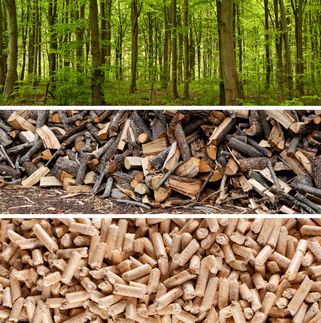Burning biomass as climate friendly alternative to coal
Advertisement
Siemens is testing the combined combustion of coal and biomass. In a joint trial with PetroAlgae Inc., an American alternative energy company, a Siemens burner was fired with coal dust and PetroAlgae’s plant-based micro-crop (microcultures) for the first time at the University of Utah in the USA. The new energy source demonstrated good combustion properties. The nitrogen oxide emissions were approximately 20 percent lower than when operating the burner with coal alone.
Biomass is a climate-neutral fuel, for the amount of carbon dioxide (CO2) that plants release is equal to the amount that they previously withdrew from the atmosphere for their growth. Biomass can be an environmentally friendly alternative to burning coal alone. The micro-crops such as algae consume around twice their weight in CO2 while they are growing. Due to this high carbon content, they deliver a great deal of energy relative to their mass. No valuable farmland is needed to produce algae, as the plants thrive in open ponds, where they can be harvested continuously every few hours. In addition, PetroAlgae’s micro-crops also produce supply of high quality protein for farm animals and human consumption in the food & beverage industries. After the protein is removed from the biomass crop harvest the energy-rich residue is processed into feedstock for fuel.
For use in the burner, the biomass was dried and finely ground. The powder and coal dust were blown into the fuel injector separately and mixed only just before combustion. The biomass accounted for approximately ten percent of the total heat output (1.2 megawatts). Now that the Siemens burner has proven to be highly suitable for combined coal and biomass firing, the plant-based share will be increased. PetroAlgae Inc. has already successfully burned biomass fuel in a smaller, bench scale installation, alos at the University of Utah. The nitrogen oxide emissions were below the values of coal-only firing in these tests as well. In a separate project, researchers from Siemens Corporate Technology developed a method to easily harvest algae. They demonstrated in the lab that particularly fast-growing species of algae accumulate on magnetic particles. The algae can be harvested as easily as a magnet collects iron nails.
Most read news
Other news from the department science

Get the chemical industry in your inbox
By submitting this form you agree that LUMITOS AG will send you the newsletter(s) selected above by email. Your data will not be passed on to third parties. Your data will be stored and processed in accordance with our data protection regulations. LUMITOS may contact you by email for the purpose of advertising or market and opinion surveys. You can revoke your consent at any time without giving reasons to LUMITOS AG, Ernst-Augustin-Str. 2, 12489 Berlin, Germany or by e-mail at revoke@lumitos.com with effect for the future. In addition, each email contains a link to unsubscribe from the corresponding newsletter.




























































